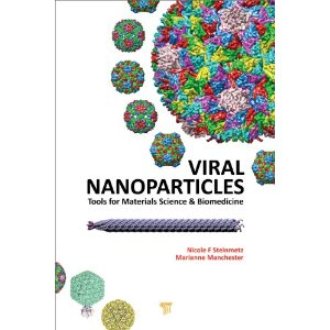Bacteria and viruses, which were affecting insects, plants and mammals, are turning to be beneficial in drug-delivery and chemical imaging of body cells, key agent in the manufacture of small battery electrodes, system storage devices, and in several nanotechnologies.
 Textbook Viral Nanoparticles
Textbook Viral Nanoparticles
Steinmetz, during her career growth, has produced multi-layered thin film arrays using several three-dimensional viral nanoparticles, which find its application in sensors or nanoelectronics. At present, she is engaged in research on plant viruses used in medical applications such as tumor imaging and diagnosis and delivering of drugs to specific targets. Manchester made effective study on the connection between viral nanoparticles and physiologic systems based on interaction of viruses within cell surfaces and body organs.
Viruses are playing a key role in nanoscience and nanotechnology as they are nano-sized measuring about 100,000 times smaller than a human’s hair width. They have structures optimized by nature both chemically as well as physically with each unit of the virus strain being alike. They have the ability to arrange themselves into two-and three-dimensional structures, enabling low cost and easy production. These harmful organisms are also steady, tough and biocompatible.
The author summarizes how scientists have catalyzed viruses to create thin-film micro-arrays and to develop nanowires used in nanoelectronic industry. The book highlights how researchers have turned harmful agents into favorable ones and also how they have changed the structures, genetically or chemically, for specific applications. It explains how the viral nanoparticle surfaces have been altered to tie up with specific targets, for example cancer cells and how they have made internal changes to its structure to enable drug delivery, lighting chemicals in imaging process and others.